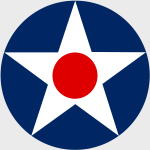Hobby Master HA7003 USN Brewster F2A-2 Buffalo Fighter - VS-201, USS Long Island (CVE-1), AVG-1, 1941 (1:48 Scale)
"Why should we have a navy at all? There are no enemies for it to fight except apparently the Army Air Force."
- General Carl Spaatz, Commander of the US 8th Army Air Force, after WWII
 Built by the Brewster Aeronautical Corporation in Queens, New York City, the F2A Buffalo was the first production monoplane fighter to enter service with the US Navy. The F2A was an all-metal, single-engine, single-seat, mid-wing monoplane with retractable landing gear and a tail hook for carrier operations. The control surfaces, i.e., ailerons, elevators and rudder, were metal framed but covered with fabric. The struts of the hydraulically-operated landing gear retracted into the underside of the wing while the wheels fitted into the stubby fuselage below the wings. The tail hook was fully retractable into the rear fuselage while the tail-wheel partially retracted into the rear fuselage. Because of its short wingspan, the F2A did not need a folding wing configuration to be accommodated on U.S. aircraft carriers.
Built by the Brewster Aeronautical Corporation in Queens, New York City, the F2A Buffalo was the first production monoplane fighter to enter service with the US Navy. The F2A was an all-metal, single-engine, single-seat, mid-wing monoplane with retractable landing gear and a tail hook for carrier operations. The control surfaces, i.e., ailerons, elevators and rudder, were metal framed but covered with fabric. The struts of the hydraulically-operated landing gear retracted into the underside of the wing while the wheels fitted into the stubby fuselage below the wings. The tail hook was fully retractable into the rear fuselage while the tail-wheel partially retracted into the rear fuselage. Because of its short wingspan, the F2A did not need a folding wing configuration to be accommodated on U.S. aircraft carriers.
The Buffalo entered squadron service in the summer of 1940 and it was not long before three serious defects were identified. The first was the landing gear; it was not strong enough for carrier operations. Brewster strengthened two weak struts but a real fix would require a redesign of the aircraft. The second defect was identified by reports from Europe which indicated that the Buffalo did not meet the performance criteria of other aircraft then in combat, e.g., armor protection, self sealing fuel tanks, etc. Armor protection was added to the F2A-3 resulting in a heavier, unstable aircraft. One solution was to use a more powerful Pratt & Whitney engine but this would require a redesign of the aircraft. The third problem was the Brewster company management who had a habit of promising more than they could deliver resulting in serious delays in the deliveries of the aircraft. The final straw came when the Navy realized that the Grumman F4F-3 Wildcat was a superior aircraft in virtually every respect so no further Buffalos were ordered.
Pictured here is a 1:48 scale replica of a USN Brewster F2A-2 Buffalo fighter then attached to VS-201, embarked upon the USS Long Island AVG-1, during 1941.
Sold Out!
Dimensions:
Wingspan: 8-3/4-inches
Length: 6-1/2-inches
Release Date: July 2007
Historical Account: "Training Wheels" - The second USS Long Island (CVE-1) (originally AVG-1 and then ACV-1) was the lead ship of the Long Island class and the first escort aircraft carrier of the United States Navy.
She was laid down on July 7th, 1939, as Mormacmail, under Maritime Commission contract, by the Sun Shipbuilding and Drydock Company, Chester, Pennsylvania, launched on January 11th, 1940, sponsored by Miss Dian B. Holt, acquired by the Navy on March 6th, 1941, and commissioned on June 2nd, 1941 as Long Island (AVG-1), Commander Donald B. Duncan in command.
In the tense months before the attack on Pearl Harbor, the new escort aircraft carrier operated out of Norfolk, Virginia, conducting experiments to prove the feasibility of aircraft operations from converted cargo ships. The data gathered by Long Island greatly improved the combat readiness of later "baby flattops." Just after the Japanese attack, Long Island escorted a convoy to Newfoundland and qualified carrier pilots at Norfolk before departing for the West Coast on May 10th, 1942. Reaching San Francisco June 5th, the ship immediately joined Admiral William S. Pye's four battleships and provided air cover while at sea to reinforce Admiral Chester Nimitz's forces after their brilliant victory in the Battle of Midway. She left the formation on June 17th and returned to the West Coast to resume carrier pilot training.
Long Island returned to the West Coast on September 20th, 1942, as the new “baby flattops” took up the slack in the Pacific war zones. For the next year, the escort carrier trained carrier pilots at San Diego, an unglamorous but vital contribution to victory. Long Island was reclassified CVE-1 on July 15th, 1943. During 1944 and 1945, she transported airplanes and their crews from the West Coast to various outposts in the Pacific. After V-J Day, she revisited many of these same bases while transporting soldiers and sailors back home during Operation Magic Carpet.


